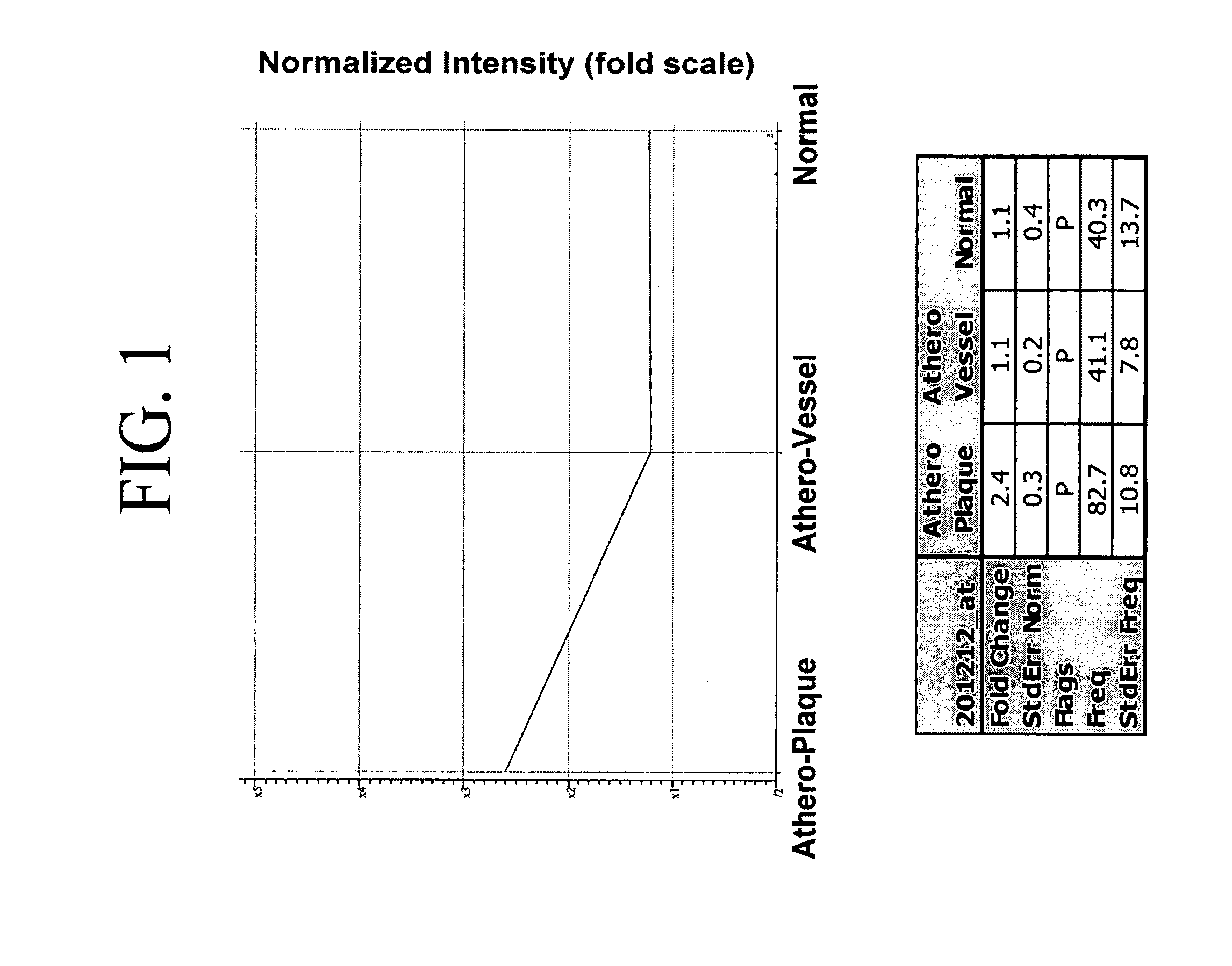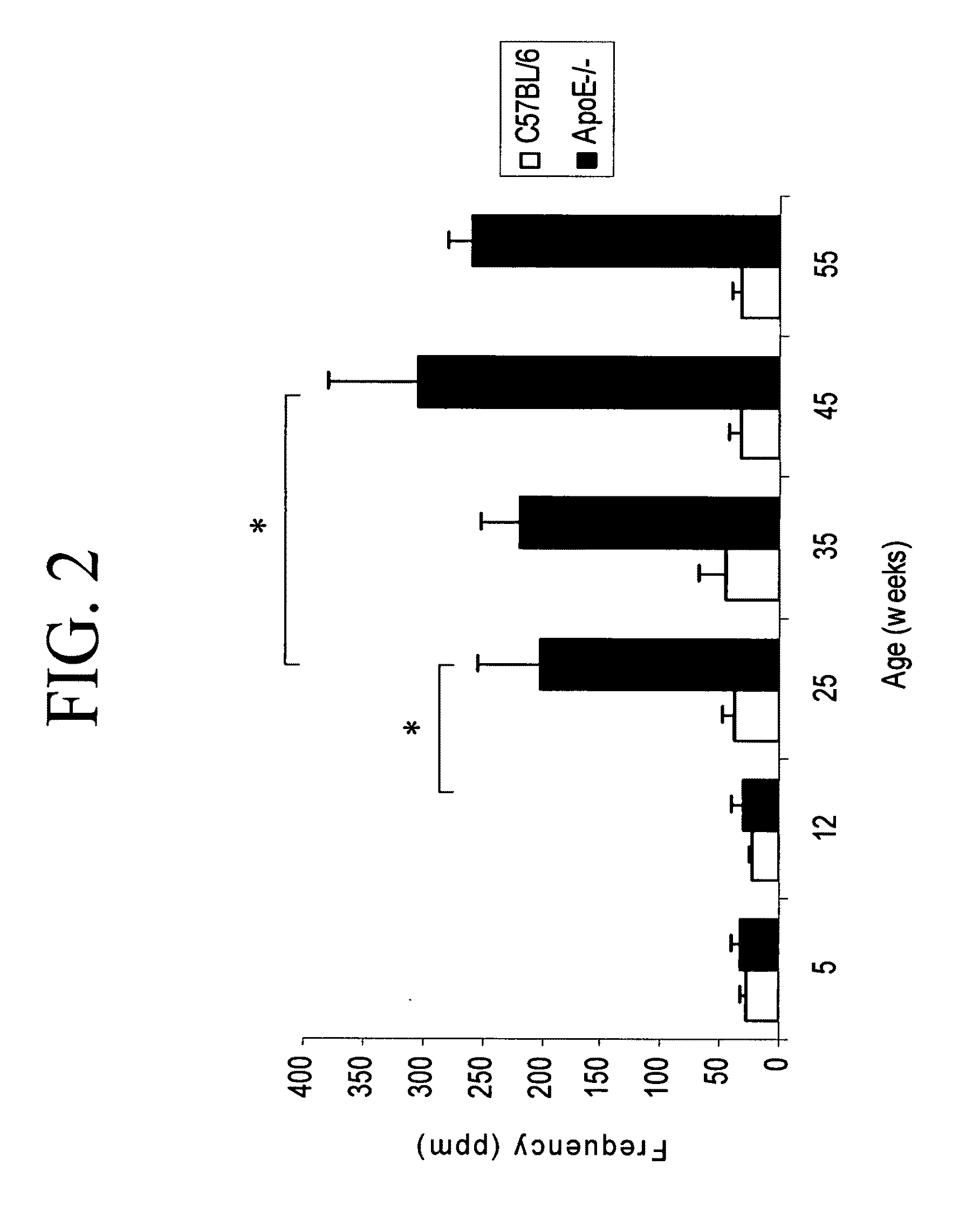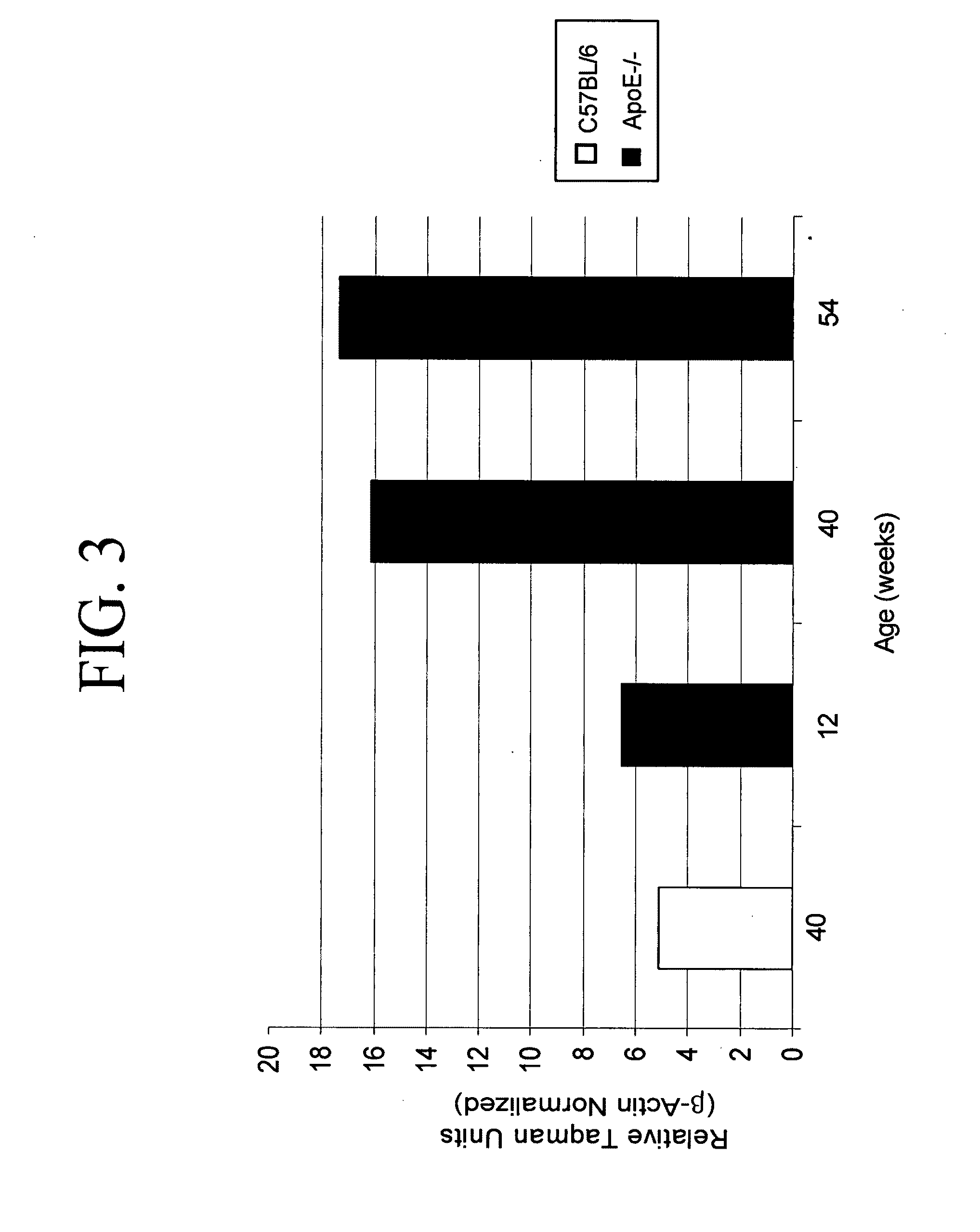Expression of the cysteine protease legumain in vascular and inflammatory diseases
a cysteine protease and inflammatory disease technology, applied in the field of legumain, can solve the problems of reducing the activity of the cysteine protease legumain, reducing the likelihood of the patient either, and reducing the likelihood of the patient's activity
- Summary
- Abstract
- Description
- Claims
- Application Information
AI Technical Summary
Benefits of technology
Problems solved by technology
Method used
Image
Examples
example 1
Legumain is Highly Expressed in Human Atherosclerotic Samples and During Atherosclerosis Disease Progression in ApoE− / − Mice
[0174]To determine whether cysteine proteases might be involved in atherosclerotic lesions, the expression pattern of legumain was analyzed in human atherosclerotic arterial samples.
example 1.1
Expression Profiling of Legumain in Human Atherosclerosis
[0175]Expression data of human atherosclerotic plaques and human plaque-free arterial samples was downloaded from the GENELOGIC™ database. The data were generated from hybridization of RNA to the AFFYMETRIX® (Santa Clara, Calif.) Hg—133A GENECHIP™ oligonucleotide microarrays. Data analysis was performed using GENESPRING™. The normalized data were filtered for gene transcripts that had either increased or decreased levels of expression relative to the average of the controls. Gene transcripts with increased levels of expression had to have a call of “Present,” a frequency >5, and a change in expression of at least 2-fold in at least 70% of the samples. Decreasing gene transcripts had to have a call of “Present,” a frequency >5, and a change in expression of at least 2-fold in at least 70% of the samples. The statistical analyses were performed using GENESPRING™ v6.1.
example 1.2
Results
[0176]Legumain expression was increased in human atherosclerotic arterial samples containing plaques relative to plaque-free segments or nondiseased arterial samples (FIG. 1).
PUM
| Property | Measurement | Unit |
|---|---|---|
| pH | aaaaa | aaaaa |
| pH | aaaaa | aaaaa |
| Tm | aaaaa | aaaaa |
Abstract
Description
Claims
Application Information
 Login to View More
Login to View More - R&D
- Intellectual Property
- Life Sciences
- Materials
- Tech Scout
- Unparalleled Data Quality
- Higher Quality Content
- 60% Fewer Hallucinations
Browse by: Latest US Patents, China's latest patents, Technical Efficacy Thesaurus, Application Domain, Technology Topic, Popular Technical Reports.
© 2025 PatSnap. All rights reserved.Legal|Privacy policy|Modern Slavery Act Transparency Statement|Sitemap|About US| Contact US: help@patsnap.com



